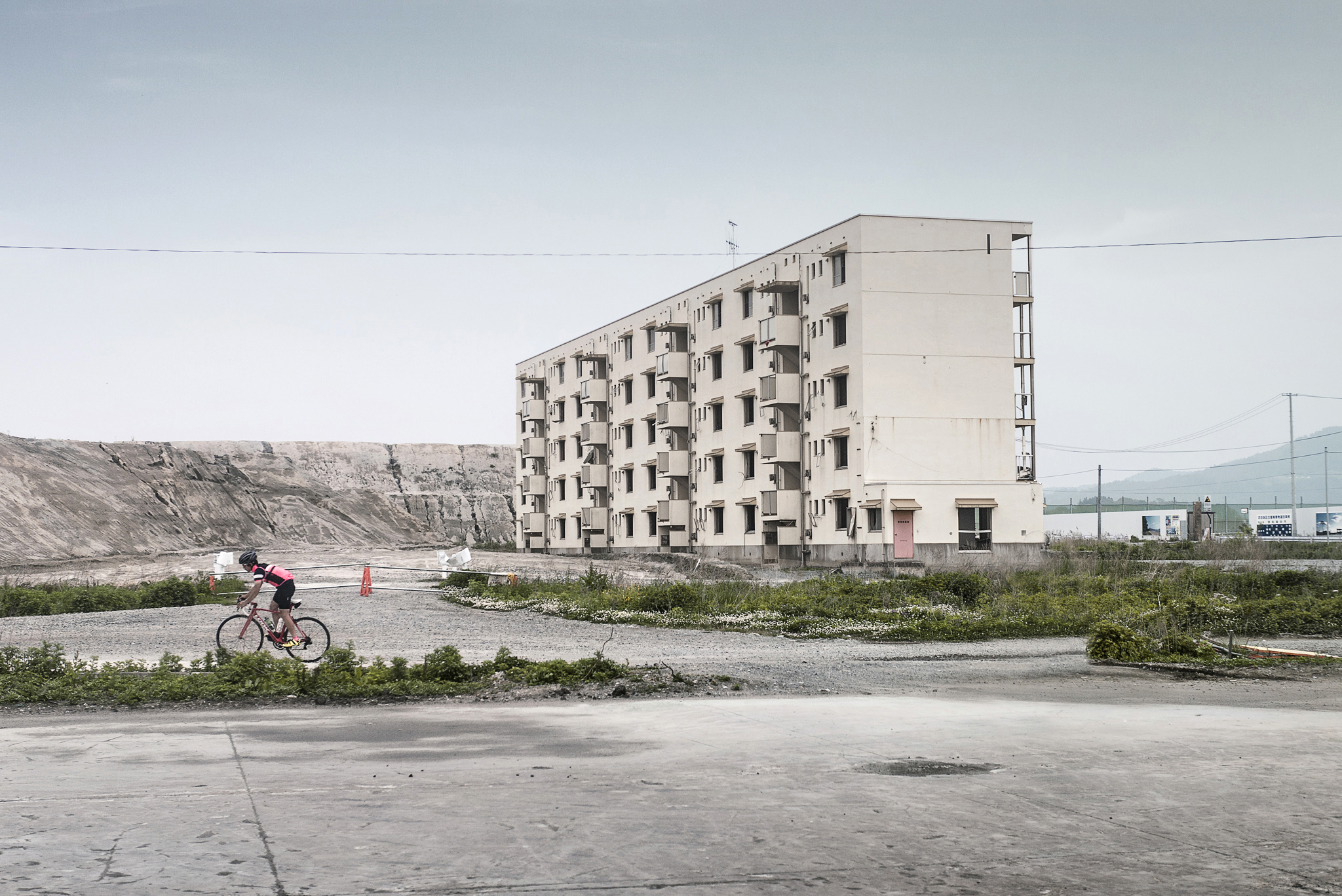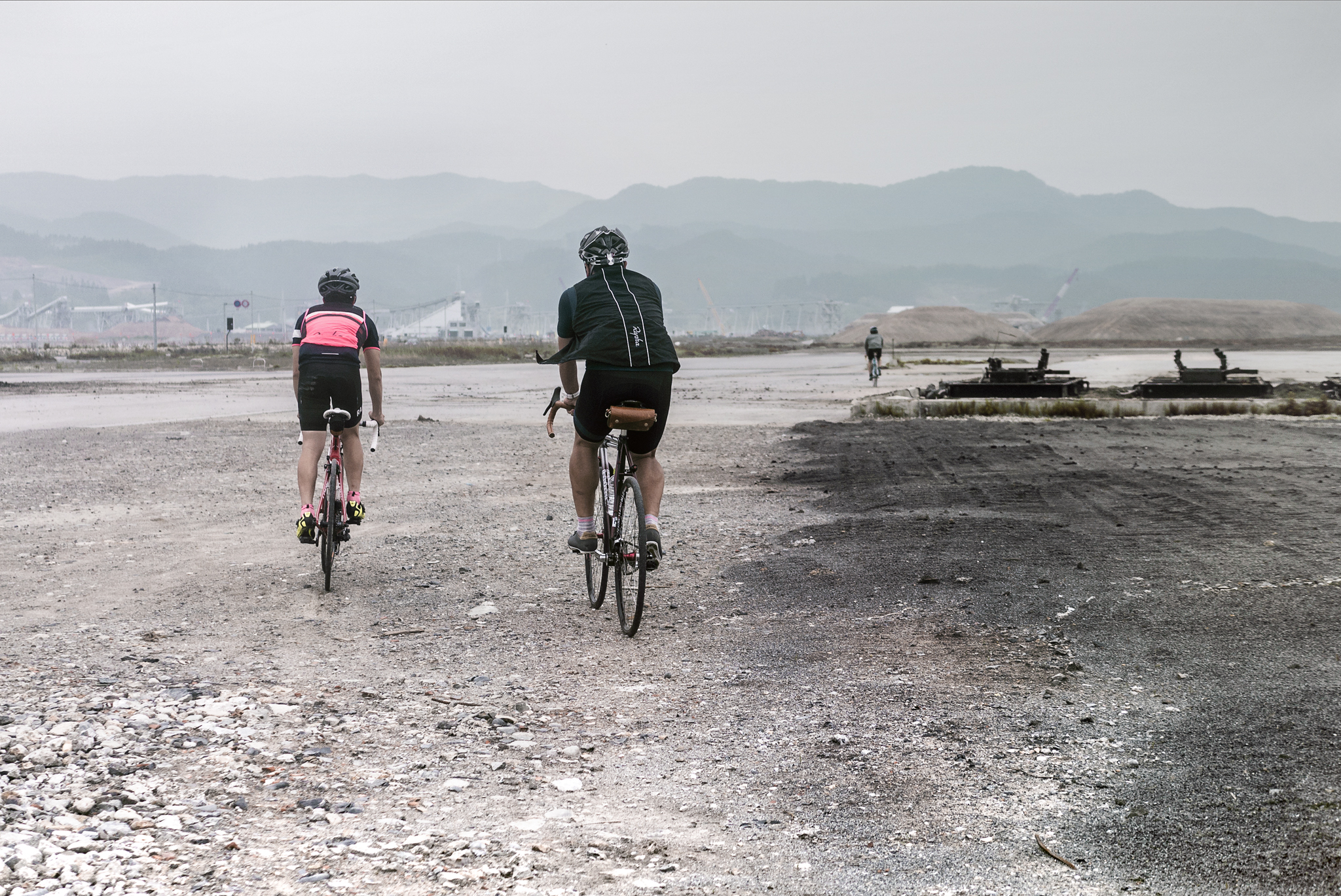RETURN TO TOHOKU: RIKUZENTAKATA
Client Rapha
Year 2014
Year 2014
March 11th will mark the fourth year since the east coast of Japan was devastated by a tsunami. Unsurprisingly, given the scale of the disaster, the people of the Tohoku region are still rebuilding.

One of the cities in the region most affected was Rikuzentakata. Fifteen-metre high waves destroyed homes, buildings and lives, and what remains now is an overwhelming emptiness. Rikuzentakata was noted for its tree-lined coast, regarded as among the most beautiful landscapes in Japan. Tragically, after the disaster, only one of its 70,000 trees remained standing. It became known as ‘the miracle pine’. These days it’s miles of conveyor belts that follow the coastline, a sight in itself, snaking mechanically in and out of the distant mountains, from where they transport rocks to rebuild the land that was washed away.




Since the Rapha Continental shot a film in the region, in 2012, there’s been an annual ride in Tohoku, organised by Daisuke Kitayama, the film’s director, and Seiichi Watanabe, a Continental rider. With another anniversary approaching, I travelled there with friends recently, both to ride and pay our respects. I’d been to Tohoku before, a few months after the tsunami struck, to take aid and supplies. The scene then was shocking; debris, twisted cars and remnants of what used to be homes.
The hunt for victims was still taking place. In the distance, officials in white hazard suits carefully worked in the rain to find lost souls — an unforgettable image.
The hunt for victims was still taking place. In the distance, officials in white hazard suits carefully worked in the rain to find lost souls — an unforgettable image.

Evidence of the disaster is everywhere. Most of the areas affected have been neatly flattened to make way for new construction. Many people, including the elderly, still live in temporary housing and, with no chance of employment, younger folk have been forced outside the region. The problems are serious and ongoing, but largely forgotten by the media and government as they turn their attentions to the Olympic Games — due to be hosted by Tokyo in 2020 — and more positive news.

The first day’s riding, in what is a very mountainous region of the country, opened up after a couple of miles, with a climb that came as a surprise to everyone except our guide, Mitsukuni. The Hakone Pass has sections where the gradient rises above 20%, and the 40-minute ascent through the dense treeline, experiencing sights and smells that fed the senses, was an intense wake-up. Arriving at the summit, the view revealed the beauty of the region. Looking down over the Hirota Peninsula and out to the Pacific Ocean, the area that once was Rikuzentakata City was a patchwork of flattened amber shades among the verdant green of the highlands. With the peninsula largely submerged in the wake of the tsunami, some areas effectively became islands, and for days survivors had no electricity or means of communication. The only drinking water was from mountain run-off.
Descending, we made our way north along the undulating coast to the site of Ofunato City, once a thriving fishing hub but where now few buildings remain. Passing shipping containers, we were told these had been tossed like toys on to the shore as the force of the water drove everything inland. A little further along, a huge concrete plant loomed. Corroded by sea air and badly damaged by the quake, it was at least still operating.
Descending, we made our way north along the undulating coast to the site of Ofunato City, once a thriving fishing hub but where now few buildings remain. Passing shipping containers, we were told these had been tossed like toys on to the shore as the force of the water drove everything inland. A little further along, a huge concrete plant loomed. Corroded by sea air and badly damaged by the quake, it was at least still operating.

We ride in and out of the saddle, maintaining a tempo along the meandering coastline and then further inland, to more secluded backroads surrounded by dense forest. There’s a welcome change in atmosphere as unkempt roads transform into dirt paths, which we climb until we are forced to abandon our bikes, and we walk on to discover a waterfall and ancient wooden shrine. We retrace our route back to the road to regain our original pace, following a river that takes us up above the Ryori Dam, a spectacular sight. Watching this great expanse of water with no one around, it’s hard to connect these tranquil green forests with the violence once unleashed by nature just a short ride away.
After navigating the coastline in the early evening light, we approach the location of the house Mitsukuni grew up in. We spend the evening cooking on the patio, with members of the family from all generations. All were evacuated from their homes when the tsunami hit, and for days the family didn’t know who had survived. Mitsukuni was working in Tokyo and unable to reach them for three weeks. It was a dark time.
After navigating the coastline in the early evening light, we approach the location of the house Mitsukuni grew up in. We spend the evening cooking on the patio, with members of the family from all generations. All were evacuated from their homes when the tsunami hit, and for days the family didn’t know who had survived. Mitsukuni was working in Tokyo and unable to reach them for three weeks. It was a dark time.

In the morning, after a very satisfying breakfast and overwhelming hospitality, we headed south to circumnavigate the peninsula and the Ono coast, where beautiful sandy beaches were once full of swimmers. Around this area, Mitsukuni tells us, the tsunami reached some of its highest points, leaving cars stranded on top of tall buildings and boats wedged among the branches of trees. We make our way along gravel roads and through more evergreen woodland. It’s a steep trail, one seldom attempted by cyclists, and leads to the Kurosaki Senkyo Observatory. We view the Pacific coastline with waves silently crashing against the jagged outcrops and climbing further still, to heights the water level failed to reach, there’s a glimpse at what was lost; small hamlets with neat cottage gardens, pristine farmland and the aroma of wood fires.

We descend into a wasteland of terracotta soil, eventually leading us back to Rikuzentakata City. Once with a population of 22,000, Rikuzentakata now feels almost deserted. We head towards the location of the miracle pine as conveyor belts carry rocks overhead. On the way we stop by the Yagisawa Shoten café and sample their unusual, but tasty, soy sauce ice cream. Yagisawa Shoten is a 200 year-old company whose storehouse and factory was swept away in 2011. It’s testament to the people here that the company regrouped and rebuilt its factory in Rikuzentakata. Despite what was lost in the city, there’s an in-built strength and optimism in everyone I meet. The people in this region are keen for outsiders to visit, to bear witness and, more importantly, to ensure they are not forgotten.

This story first appeared on rapha.cc